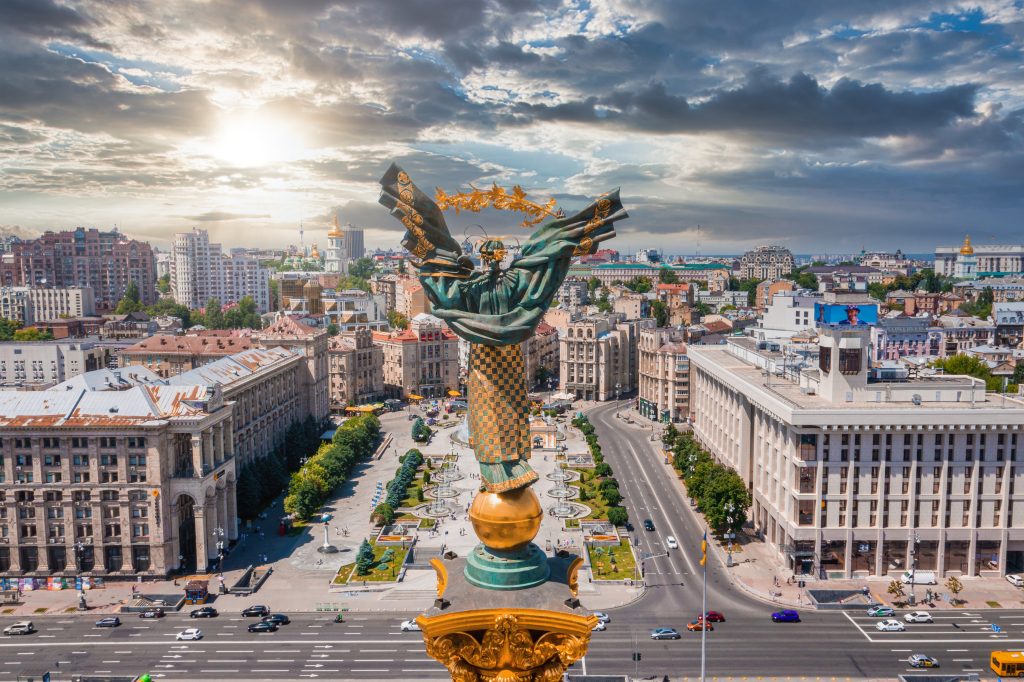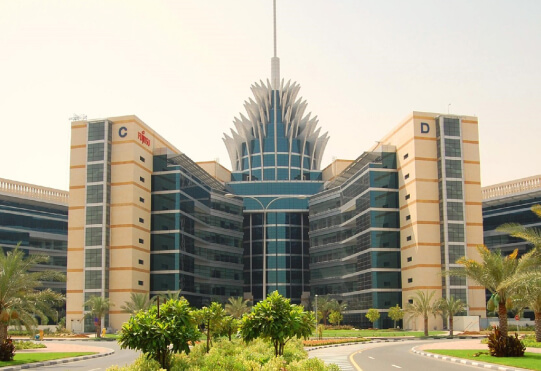While policymakers in the U.S. and the EU are having difficulties in approving more aid for Ukraine, the question of how Ukraine is going to sustain itself in 2024 has been increasingly raised by foreign investors.
The provision of aid for 2024 not only has a direct effect on the front line but also an indirect one on the bigger picture of how Ukraine can recover in the coming year. Ukraine’s overall ambition for reconstruction has been great from the very beginning of the full-scale Russian invasion. During the 2022 Summit in Davos and the 2023 Ukraine Recovery Conference in London, Ukraine outlined its recovery vision, and immediate plans, and highlighted its needs. The declared cost of reconstruction was set at $750 billion at the time.
The reported damage since then has increased by at least $700 million, according to the Kyiv School of Economics. Yet, the pace of the reconstruction projects in 2024 will be primarily determined by the situation on the front line, as well as the financial aid from Ukraine’s key partners: the United States, the European Union, and the United Kingdom.
As we approach the end of 2023, the much-anticipated Ukrainian counter-offensive, which had initially sparked optimism, has fallen short of the expected results. Leading military analysts attribute the setbacks to inadequate and delayed supplies of weapons. A glaring example of this is the provision of modern fighter jets; the decision was made in late August 2023, but deployment is expected only in the first half of 2024.
The outlook for hostilities in 2024 remains uncertain. On one hand, the persistent challenge of timely and sufficient supplies persists. Politically, the U.S. faces difficulties passing bills for military aid to Ukraine, while Germany prioritizes arms exports to Israel. The rise of far-right parties in Europe, including the staggering example of Viktor Orban from Hungary continuously blocking decisions over aid to Ukraine and Ukraine’s efforts to integrate with Europe, can further jeopardize aid provision. Given Ukraine’s reliance on foreign support, these factors suggest a lack of resources to sustain the current scale of the war, potentially reducing frontline operations.
Conversely, some of Ukraine’s partners, such as Japan, continue to promise increased support in 2024. Newly elected Polish Prime Minister Donald Tusk aims to address ‘war fatigue’ in the West. Ukrainian government officials, including Head of the President’s Office Andriy Yermak, Minister of Defense Rustem Umerov, and President Zelenskyy, assert that Ukraine has a comprehensive plan for 2024. During his December visit to Washington, D.C. President Zelenskyy reported receiving positive signals regarding future war operations. Additionally, as the U.S. builds up to elections, President Biden is likely to advocate for increased support to ensure Ukraine’s progress, stressing key foreign policy priorities to secure the support of the electorate. These factors raise the possibility of maintaining or even intensifying the conflict. Some analysts anticipate a Ukrainian counteroffensive in the Kherson region, aiming to regain the left bank of the Dnipro River in 2024.
In either scenario, the intensity of war efforts in 2024 hinges on the provision of weaponry, financial aid, and the timeline for deploying new equipment. Regardless, the protection of airspace is expected to escalate with the provision and deployment of more air defense systems and fighter jets. Consequently, attacks on cities in the rear are expected to be less effective, creating favorable conditions for the scaling of reconstruction efforts. While not on a grand scale, the growth of medium-sized and small reconstruction projects appears likely.
According to the Kyiv School of Economics, as of 1st September 2023, infrastructure, energy, education, and healthcare suffered damage amounting to about $58.5 billion. Rebuilding infrastructure serves multiple purposes in easing the movement of people, military, and aid, and renewing normal operations in the country.
Since the Recovery Conference in London, the State Agency for the Restoration and Development of Infrastructure of Ukraine has finished reconstructing over 30 roads and bridges, including modular bridges. The most extensive work in such areas has been done in Chernihiv, Kyiv, Kharkiv, Sumy, and Mykolaiv regions. One example is the reconstruction of a 115-meter bridge over the Irpin River in the Kyiv region.
Reconstruction work on four medical facilities in Chernihiv, Trostyanets, Lyutizh village, and the city of Nikopol were finished in the second half of 2023. Overall, since the beginning of the full-scale invasion, Russia has damaged 1455 medical facilities and completely destroyed another 190. Of these, 411 medical facilities have been fully restored and another 412 at least partially.
In almost two years of full-scale war, 1800 schools have been destroyed, but in 2023, 410 schools have been restored with local budgets and foreign support. In the second half of 2023, two schools in Zhytomyr were reconstructed, as well as one in Kamianske.
As for residential buildings, the Ukrainian government has greatly expanded the eRecovery program, providing citizens with grants for complete or partial reconstruction of their property. More than $53.3 million has already been distributed as a part of this program. Alongside the eRecovery program, over the last six months, the State Agency for the Restoration and Development of Infrastructure has started reconstruction processes for seven multistory buildings in Makariv, Trostyanets, Bucha, and Zaporizhzhya. An initiative for the complete reconstruction of villages has also started in Yagidne and Posad-Pokrovske villages.
The greatest reconstruction project of the State Restoration Agency during the second half of 2023 has been the building of the main water supply system for five communities following the June 2023 Russian destruction of Kakhovka HPP. The system encompasses a series of pumping stations and pipes, with a total length of 145 kilometers. The Agency reports that as of December 2023, the system is 90% ready.
A great deal of the government’s effort has been focused on expanding Ukraine’s exporting capacity. This may seem like an unusual point to add to the list of reconstruction directions, but during the full-scale war, among all the export infrastructure, it has been mostly the ports and railways that suffered damage.
Some of the road projects administered in the second half of 2023 included the reconstruction and modernization of road surfaces to border checkpoints, such as the Chervonohrad– Rava-Ruska, and Ukraine – Romania checkpoints.
On the railroad, the government has completed design projects for building the European-gauge track system in three directions. The building stages will be financed from the national budget, USAID, European Investment Bank, and Connecting Europe Facility. In addition, Ukrainian Railroads has conducted a series of initiatives to modernize the infrastructure of border crossing points to increase their capacity and purchase shunting locomotives, as well as equipment for weighing and monitoring cargo transportation.
As for sea export, since the spring of 2022, the Ukrainian government and private businesses in the agro sector have been working on expanding export routes through Romania. This has involved an ongoing process in the Reni port, including repairing piers, and performing dredging projects. The construction of floor storage warehouses is actively developing, both within and around the port.
Finally, and most importantly, Ukraine has been doing the needed paperwork to create understandable, transparent, and fair rules for internal and external players to kick off investment and reconstruction.
In particular, on one hand, the Ukrainian government together with the World Bank has been working on the development of standard contracts and tender documentation that will not contradict EU legislation to ease the entry of international donors. On the other hand, the government has also been modernizing and digitizing services in the internal construction field to attract more private construction companies to participate in public procurement projects.
Moreover, in September 2023, Ukraine updated and adopted a Law on public-private partnerships aimed at improving the current regulation of state support for large investment projects. The new edition of the Law expands the list of industries eligible for government support, decreases the entry requirements, introduces new forms of government support, and simplifies the procedure for applying for state assistance.
The Ministry of Recovery has also approved guidelines for prioritizing projects to eliminate the consequences caused by the armed aggression of the Russian Federation. The order officially approves the methodology developed with World Bank experts and RISE Ukraine Coalition NGOs.
Lastly, Ukraine has been building credibility while working with the European Union, World Bank, and United Nations on the third Rapid Needs Assessment.This will be published after the completion of the Ukraine Development Plan.
In 2024, Kyiv is charting an ambitious course for reconstruction, with a focal point on economic revitalization.
Here are the key elements of the plan:
As for financing reconstruction efforts, the governmental Fund for Elimination of the Consequences of Armed Aggression, administered by the Ministry of Communities, Territories and Infrastructure of Ukraine is the primary governmental body. The source of funds for the Fund comes from seized Russian property, and sanctions, and the budget balance remains. In 2023, the Fund operated with an amount of over $1.3 billion, and a similar amount will be expected in 2024.
Ukraine’s 2024 budget claims over $693 million in loans from foreign states, foreign financial institutions and international financial organizations for the implementation of investment projects.
Among some other sources of funds is BlackRock’s fund. In the first quarter of 2024, BlackRock plans to launch a project preparation facility for the fund to rebuild Ukraine. The Ukrainian Development Fund aims to raise from $500 million to $1 billion of catalytic capital, and the fund will be fully operational in a few years. Its likely volume will not exceed $10 billion.
Moreover, at the end of November 2023, the European Investment Bank’s Board of Directors authorized two loans, totaling €450 million. They will be funded by the EIB’s EU for Ukraine Fund, which is part of the EIB’s EU for Ukraine Initiative, which has so far received €500 million in contributions from EU Member States and guarantees from the European Commission.
As Ukraine charts its course toward reconstruction, an increasing number of foreign enterprises are eager to play a pivotal role in the nation’s revitalization. Over the past six months, several international companies have entered the Ukrainian market. One such example is the South Korean industrial company Ssangyong, which, in December 2023, declared its commitment to participating in the reconstruction of residential buildings in the Kyiv region.
Despite the inherent risks associated with entering a wartime market, the prevailing principle of “first come, first served” underscores the urgency for businesses to capitalize on this opportunity. Those who act swiftly stand poised not only to establish a foothold in the market but also to contribute significantly to Ukraine’s enduring recovery.
The reconstruction of Ukraine is a dynamic, ongoing process, spanning a spectrum of facets from physical construction to the implementation of comprehensive reforms. The current initiatives undertaken by Ukraine will persist, encompassing adjustments to legislation in alignment with international norms, advancements in the judicial system, and an unwavering commitment to reforms. These reforms are crucial, as they pave the way for expanded opportunities within the private sector, fostering an environment conducive to investment.
In seizing the moment to enter the Ukrainian market, timing proves critical. The ongoing reconstruction processes across the country’s small and medium-sized projects remain resilient, largely insulated from potential escalation or de-escalation on the front line. Ukraine’s postwar trajectory stands apart, presenting itself as a dynamic landscape ripe for international collaboration and investment. For those contemplating market entry, the present juncture represents a unique window of opportunity, characterized by a nation steadfastly committed to rebuilding and charting a distinct course toward economic resurgence.


